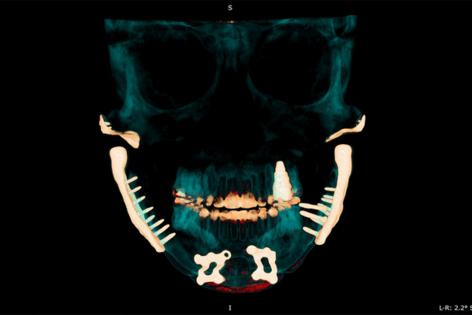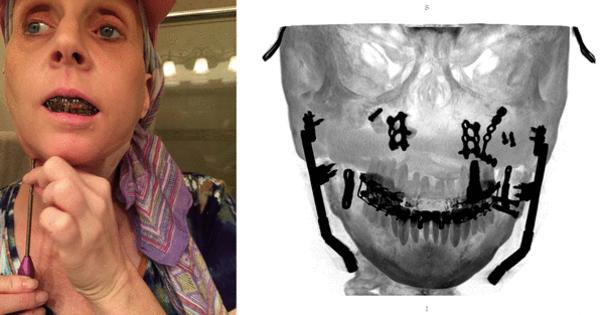The horrors of TMJ: Chronic pain, metal jaws and futile treatments
Published in Health & Fitness
A TMJ patient in Maine had six surgeries to replace part or all of the joints of her jaw.
Another woman in California, desperate for relief, used a screwdriver to lengthen her jawbone daily, turning screws that protruded from her neck.
A third in New York had bone from her rib and fat from her belly grafted into her jaw joint, and twice a prosthetic eyeball was surgically inserted into the joint as a placeholder in the months it took to make metal hinges to implant into her jaw.
“I feel like Mr. Potato Head,” said Jenny Feldman, 50, of New York City, whose medical records show she’s had at least 24 TMJ-related surgeries since she was a teenager. “They’re moving ribs into my face, and eyeballs, and I feel like a toy … put together [by] somebody just tinkering around.”
These are some of the horrors of temporomandibular joint disorders, known as TMJ or TMD, which afflict up to 33 million Americans, according to the National Institutes of Health. Dentists have attempted to heal TMJ patients for close to a century, and yet the disorders remain misunderstood, under-researched, and ineffectively treated, according to an investigation by KFF Health News and CBS News.
Dental care for TMJ can do patients more harm than good, and a few fall into a spiral of futile surgeries that may culminate in their jaw joints being replaced with metal hinges, according to medical and dental experts, patients, and their advocates speaking in interviews and video testimony submitted to the FDA.
TMJ disorders cause pain and stiffness in the jaw and face that can range from discomfort to disabling, with severe symptoms far more common in women. Dentists have commonly treated the disorder with splints and orthodontics. And yet these treatments are based on “strongly held beliefs” and “inadequate research” — not compelling scientific evidence nor consistent results — according to the National Academies of Sciences, Engineering and Medicine, which reviewed decades of research on the topic. The NIH echoes this message, warning that there is “not a lot of evidence” that splints reduce pain and recommends “staying away” from any treatment that permanently changes the teeth, bite, or jaw.
“I would say that the treatments overall have not been effective, and I can understand why,” said Rena D’Souza, director of the NIH’s National Institute of Dental and Craniofacial Research. “We don’t understand the disease.”
For this investigation, journalists with KFF Health News and CBS News interviewed 10 TMJ patients with severe symptoms who said they felt trapped by an escalating series of treatments that began with splints or dental work and grew into multiple surgeries with diminishing returns and dwindling hope.
In every interview, the patients said the TMJ pain worsened throughout their treatment and they regretted some, if not all, of the care they received.
...continued
©2024 KFF Health News. Distributed by Tribune Content Agency, LLC.
















Comments